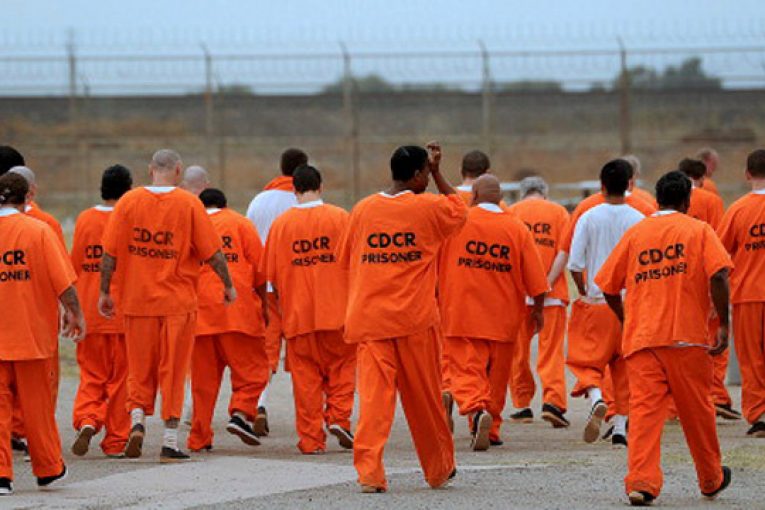
By Julietta Bisharyan, Nick Gardner and Alexis Hogan
Ten weekly highlights from CDCR’s COVID-19 crisis
CDCR Confirmed Cases and Outcomes
As of Apr. 3, there have been a total of 49,212 confirmed COVID-19 cases in the CDCR system– 25 of them emerged in the last two weeks. 27 cases are active in custody while 611 have been released while active. A total of 48,356 confirmed cases have been resolved since the start of the pandemic.
There have been 218 deaths across the CDCR system.
On Dec. 15, 2020, one incarcerated person reportedly died from complications associated with COVID-19 at CSP Sacramento. This is the first patient death at SAC and the 218th death statewide.
CDCR officials have withheld their identity, citing medical privacy issues.
As of Apr. 3, 17,778 patients have received their first round of vaccines statewide. 42,788 are fully vaccinated.
Starting Apr. 10, in-person visiting will resume at CDCR facilities since it was suspended in March 2020.
According to CDCR Secretary Kathleen Allison, the decision to reopen visiting is at the discretion of the Warden and Chief Executive Officer of each institution. In-person visits will be scheduled by email for the next few weeks while an automated system for in-person visits is being finalized with expectations to launch soon.
“I understand fully how important visitation is to someone’s rehabilitation, not only to foster the family connections that are so important for support after incarceration, but also to provide your incarcerated loved ones with a sense of hope and normalcy, two things I am eager to bring back to our prisons,” Allison said in a memo. “We will continue to phase in the return of in-person programming and ease movement restrictions in accordance with guidance from public health experts.”
Strict protocols will be put in place to protect individuals from COVID-19. These guidelines include providing proof of a negative COVID-19 test no longer than 72 hours before the visit, or receiving a negative rapid test from healthcare staff on-grounds; rapid testing of the incarcerated person within 48 hours of the visit; symptom and temperature screenings; mandatory procedure masks provided to everybody in the visiting area; limiting visits to one visitor per incarcerated person for one hour (no minors); maintaining six feet of separation; and physical contact limited to a brief hug at the beginning and end of the visit.
“I appreciate the feedback we received from family members as we created this plan. We will continue to evaluate and revise accordingly while still maintaining health and safety protocols,” she added.
In the past two weeks, Valley State Prison has tested the most individuals, 77 percent of its population. California City Correctional Facility has tested the least, just 16 percent of its population.
There are currently 95,032 incarcerated persons in California’s prisons– a reduction of 27,377 since March 2020, when the prison outbreaks first began.
Effect on Public
Not long after George Gascón was elected LA District Attorney in 2020, a civil lawsuit was filed against him by the Association of Deputy District Attorneys (ADDA) for Los Angeles County. The lawsuit is requesting that DA Gascón follow California state constitutional and statutory law. In February, Los Angeles Superior Court Judge Chalfant ruled in favor of the ADDA.
Recently, a letter from an Interim Chief Deputy District Attorney, Joseph F. Iniguez, was sent to the LA Deputy District Attorneys detailing the complaints from CDCR, which claim that “…the Assistant DAs are violating HIPAA protections of currently incarcerated inmates seeking resentencing under medical claims, by requesting proof of COVID treatments and relevant medical proof.”
The Globe reports that incarcerated people are trying to be released from prison on the grounds that the coronavirus poses a medical risk, and that some have been released despite them receiving the coronavirus vaccine.
DA Gascón has rejected the LA Deputy DAs request for proof of medical necessity for release. He has also changed the usual procedures for resentencing by setting up a special unit to handle the resentencing cases, rather than the typical procedure of sending the request back to the original DA unit and judge who initially sentenced the case.
The Globe’s source at the LA DA’s office cited their concerns for the disregard of evidence to support the releases, as well as claimed that “‘The Chief Deputy is saying ‘we don’t want you to have access to their medical history,’ when really, they just want these people released.”
An excerpt from DA Gascón’s office details the resentencing policy, “The Resentencing Unit will prioritize cases for resentencing based on governing law, careful review of available data, individual case files, public safety, and policy priorities specified by the District Attorney.”
Case Management Conference
Testing
CDCR has reorganized the Department Operation Center (DOC), initially established on March 15, 2020, as a COVID-19 Support Team. The decision follows a sharp decline in active cases, which recently dropped to below 50 from nearly 10,000 in January.
Quarantine and Isolation
To compensate for the absence of in-person visits due to pandemic safety measures, CDCR pledged an expansion in video conferencing. During the March 24 conference it was announced that the virtual platform will be upgraded in response to an influx of nullified visits due to unapproved visitors as well as reports of individuals auctioning off their allotted time slots. The logistics of this decision are set to be finalized in the coming weeks.
As for in-person visits, CDCR and CCHCS identified April 10 as a target date for accepting friends and relatives back into facilities. All visitors will receive temperature and symptom screenings, COVID testing, and will be required to wear face coverings and adhere to physical distancing standards. Visits will be shortened to account for restrictions on simultaneous meetings.
Intake
Central California Women’s Facility, which consistently led CDCR in active cases throughout March, was found to have violated a directive limiting intake cells to four of fewer people. A March 12 report surfaced an incident in which an individual, later testing positive for COVID-19, had shared a cell with seven other people.
“We are concerned…that neither CDCR nor CCHCS were aware of this problem before we brought it to their attention,” commented the Prison Law Office, a litigation-focused incarcerated advocacy group.
Wasco State Prison, another facility approved for intake, has also seen double digit active cases, and even accounted for one-third of all sick individuals on March 23.
Staff Compliance:
A 2020 OIG report identified a consistent trend of noncompliance with physical distancing and PPE measures by both CDCR staff and incarcerated populations. In response, Judge Tigar commissioned subsequent rounds of unannounced OIG monitoring at 17 adult and 2 juvenile facilities that aimed to assign compliance ratings for both populations.
1,197 instances of noncompliance were reported from December 1, 2020 to February 23, 2021, 96 of which were repeat violations.
At CSP Solano, 7 out of 15 incarcerated individuals in the culinary area were observed improperly wearing masks, and only after noticing OIG inspectors did prison officials instruct the men to fix their face coverings. This follows a trend of noncompliance in this specific part of the facility documented in previous reports; “the prison clearly has not taken the necessary action to enforce face covering compliance in the culinary area,” inspectors concluded.
The report additionally highlighted a discrepancy in disciplinary action for non compliant officials. At the California Correctional Institution, the issuance of punitive Rules Violation Reports (RVR’s) greatly outnumbered verbal counseling, with 7 instances of the latter reported compared to 26 of the former. Conversely, no RVR’s were distributed at CSP Solano, despite 37 instances of verbal counseling.
CDCR Staff
There have been at least 16,090 cases of COVID-19 reported among prison staff. 26 staff members have died while 15,884 have returned to work. 206 cases are still active.
As of Apr. 3, 2,239 staff members have received their first round of vaccines statewide. 24,801 staff are fully vaccinated.
CDCR Comparisons – California and the US
According to the Marshall Project, California prisons rank second in the country for the highest number of confirmed cases, following Federal prisons closely behind. Texas ranks third.
California makes up 12.5 percent of total cases among incarcerated people and 8.6 percent of the total deaths in prison.
California also makes up 15 percent of total cases and 13 percent of total deaths among prison staff.
Division of Juvenile Justice
As of Apr. 3, there are no active cases of COVID-19 among youth at the Division of Juvenile Justice (DJJ) facilities. 204 cases have been resolved since the first case was diagnosed in June
A Year Ago Today
Last year, on Apr. 3 2020, there were a total of 19 active cases of COVID-19 across CDCR.
At that time, California only had 12,023 cases within the state. As of today, California has had a total of 3.66 million cases.
A year ago, CDCR first announced its plan to expedite transition to parole for certain eligible incarcerated individuals with 60 days or less to serve to help prevent the spread of COVID-19. An Internal patient registry was also launched to assist in monitoring patients with suspected or confirmed COVID-19.
References




